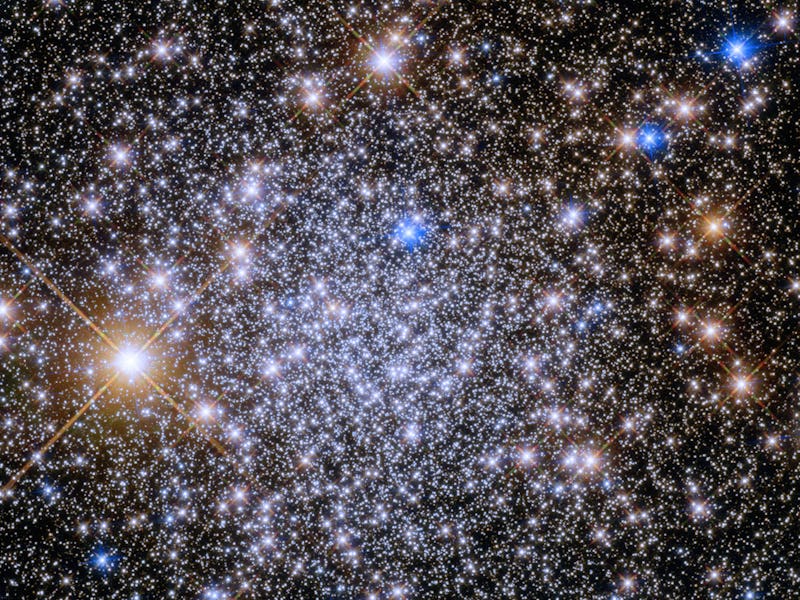Look! New Hubble image displays a dazzling disco ball of stars
This glittering star cluster lives so close to the center of our galaxy that tidal forces are stripping away its outermost stars.

Thousands of stars, clumped together in a dazzling ball of light, sparkle brightly in this Hubble Space Telescope image.
Hubble recently pointed its instruments at Prismis 26, a globular cluster 23,000 light years away, near the bright bulge of stars around the center of our galaxy. A globular cluster is exactly what it sounds like: a group of stars whose mutual gravitational pull holds them together in a densely-packed sphere, orbiting a shared center.
The Hubble Space Telescope imaged globular cluster Prismis 26 in visible and infrared wavelengths.
But no matter how tightly the stars’ gravity binds them together, it’s not enough to overcome the strong inner galaxy tidal field: the even stronger gravitational pull of the galactic bulge and the black hole at its center. Tidal forces from the heart of our galaxy have been stripping away the outermost stars from Prismis 26 for most of the cluster’s 12 billion-year existence — and it’s still happening.
Astronomers estimate that the star cluster is about 12 billion years old, but they’re hoping new Hubble data can shed more light on its exact age.
They’re also hoping to learn more about the chemical makeup of the stars themselves. Most of them seem to be rich in nitrogen, as well as other elements forged in the nuclear fusion reactions at the cores of stars (anything heavier than hydrogen and helium, in other words).
Stars in clusters in or near the galactic bulge tend to be relatively nitrogen-rich. By analyzing the spectrum of light from the stars — the individual wavelengths emitted by different chemical elements — astronomers can map what Prismis 26’s stars are made of in more detail. That could shed light on how old the stars are and whether all the stars in the cluster are the same age or if the cluster contains stars of several different ages. That, in turn, could shed light on how globular clusters like this one form and evolve.
Prismis 26 looks redder than it is because the galactic bulge is a dusty region of space. All that interstellar dust tends to scatter shorter wavelengths of light — blue and ultraviolet, for instance — and only let longer wavelengths pass through. In other words, we’re basically seeing Primis 26 through a red filter. Hubble’s new data will help astronomers understand how much that filter affects the spectrum of light from Prismis 26, so they can get better estimates of its age and chemical makeup.
The star cluster is holding its own despite the inexorable strong inner galactic tidal force, and so is Hubble after more than 30 years in space.
This article was originally published on